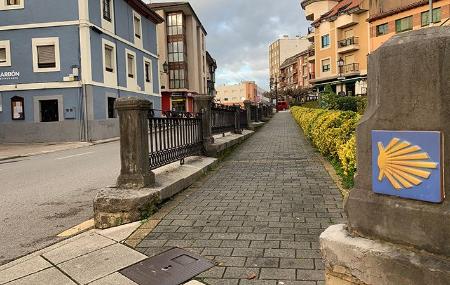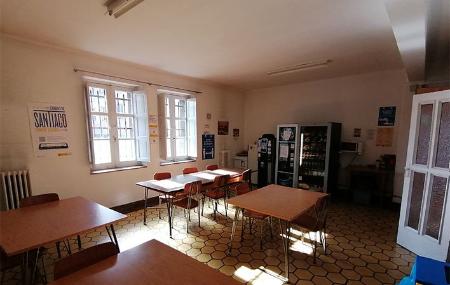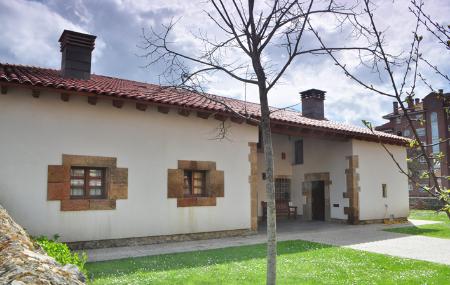It is not surprising that the other two major routes which, together with the Primitive Way, at the time disputed the primacy of the Jacobean itineraries, did not take long to develop branches connecting them with the original pilgrimage route.
The route of the connection of the Coastal Way and the Primitive Way
The link between the Asturian side of the Coastal Way and the Primitive Way starts in the village of Casquita, very close to Villaviciosa, and goes into the mountains in search of Oviedo/Uviéu following two possible detours that converge at the top of La Campa.
It goes without saying that the link between the Coastal Way and the Primitive Way runs inland, crossing terrain that is not complex, but is somewhat more arduous than what pilgrims coming along the coastline had to go through until now. After leaving Casquita behind and arriving at San Pedru de Ambás, two options open up to the pilgrims.
The first consists of following the official itinerary, while the second allows the pilgrims to visit the monastery of Santa María la Mayor de Valdediós.
/documents/39908/67674/salvador-valdedios.jpg/f4ec4a85-91df-7b29-9cc8-709e4b2ee04e?t=1729580982903
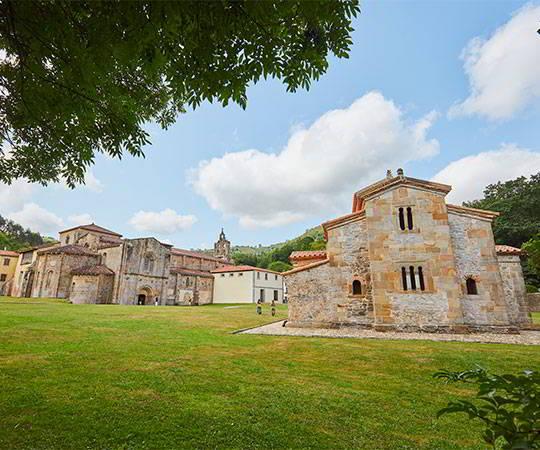
Monastery and Church of San Salvador de Vadediós (Villaviciosa).
Needless to say, this option is the most interesting. Firstly, because the monastery was of great importance in the Middle Ages and has a beautiful Romanesque style defined by the austerity that the Cistercian order always displayed, but also because next to it is the pre-Romanesque church of San Salvador de Valdediós, nicknamed the Conventín, precisely because of its proximity to the great convent. It is believed to have been built in the time of King Alfonso III, and we know that its consecration was attended by seven bishops, which is a good indication of its importance.
/documents/39908/67674/pola-siero.jpg/61ae0279-2fa5-e444-ee97-23d8c4eef3a3?t=1729581322875

La Pola Siero.
It is one of the most emblematic buildings of Asturian Art, and in addition to the lightness of its proportions, its elaborate latticework and mural paintings still give an idea of the splendour that this small temple may have enjoyed in its heyday.
Both routes, the official route and the Valdediós route, meet again at the top of the Campa. From there, pilgrims should head towards Vega de Sariego and then continue on to La Pola Siero along an alternative route to road traffic that will take them through El Castru, Aveno, the hermitage of the Virgen de Bienvenida and the bridge of Recuna.
La Pola Siero is one of the most lively and bustling towns in Asturias. It has a great gastronomic tradition, and its calendar includes some of the most popular festivals in the whole autonomous community. From there, you only have to go through El Berrón, Fonciello, the palace of Meres, San Pedro de Granda, Colloto/Cualloto and the Cerdeño neighbourhood to reach Oviedo/Uviéu and, before the doors of the cathedral, begin to follow the paths of the Primitive Way.
/documents/39908/67674/mapa-conexion-costa-primitivo.png/bc693857-75d5-a2f7-4b54-943256241eac?t=1729065336052

Itinerary and stages of the connection between the Coastal Way and the Primitive Way
Find hostels in the connection of the Coastal Way and the Primitive Way
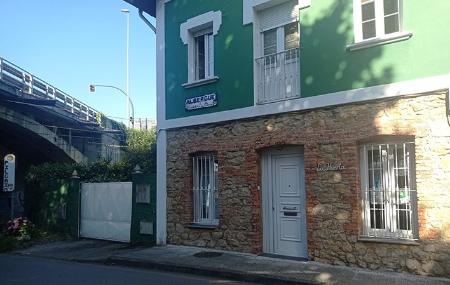 Connection Coastal - Primitive
Stage 2: La Pola Siero - Oviedo/Uviéu
Connection Coastal - Primitive
Stage 2: La Pola Siero - Oviedo/Uviéu
Albergue' l Güertu Pilgrim
Colloto/Cualloto (Siero)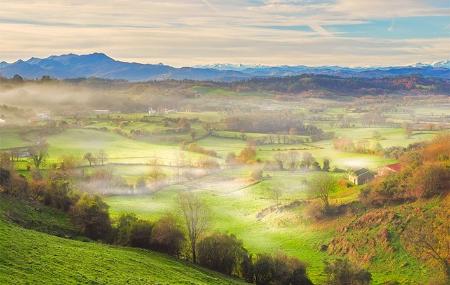 Connection Coastal - Primitive
Stage 1: Casquita - La Pola Siero
Connection Coastal - Primitive
Stage 1: Casquita - La Pola Siero
Albergue de peregrinos de Vega
Vega de Sariego (Sariego)Between two roads
The importance of Oviedo/Uviéu in the pilgrimages to Santiago de Compostela was very important from the very beginning of the Camino. It was no wonder. As well as being the place where the king who discovered the tomb of the apostle had his throne and ordered to build on it what was the first antecedent of the current Compostelan basilica, important relics were kept in its Holy Chamber, which were uncovered in the second half of the 11th century.
These were kept inside an oak box, the so-called Holy Ark, which had arrived in Oviedo/Uviéu in the 9th century after a long journey that began in Jerusalem, around 614, and ended in the domains of Alfonso II after passing through Cartagena, Seville, Toledo and the Monsacro. Many years later, in 1075, when Alfonso VI visited the old Asturian capital, its mystery was revealed.
/documents/39908/67674/caja-agatas.jpg/1de1b759-3bb3-ba86-a1d7-a5a916c1d229?t=1729583037999

Caja de las Ágatas (Oviedo/Uviéu).
The monarch was accompanied by a retinue which, according to legend, included the Cid Campeador himself, and taking advantage of his presence in the ancient court, a solemn ceremony was held in which the Ark was opened and its contents exposed before the eyes of the whole of Christianity.
According to the sources of the time, the bones of various saints, the remains of the shroud of Jesus - today known as the Holy Shroud -, thorns from his crown, a sandal of Saint Peter, milk of the Virgin... were found there. A whole arsenal that reinforced the reputation of Oviedo/Uviéu, which had declined when it lost its status as a royal seat, and made it once again a favourite among pilgrims who were considering leaving their homes to make their way to the tomb of St. James.


